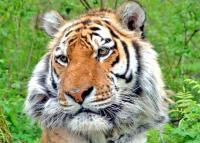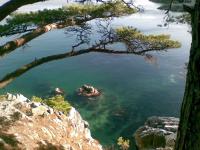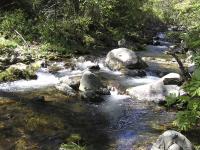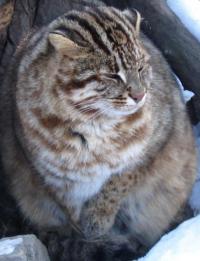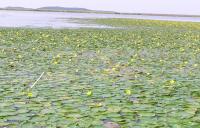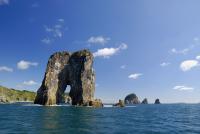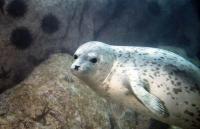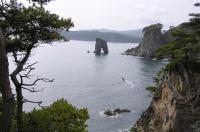PRICE REQUEST>>>
Day 1: Vladivostok
After arriving in Vladivostok our English-speaking representative will meet you in airport and help with accommodation in hotel. Afterwards you will take a walking tour in downtown of the city. Vladivostok was founded in 1860 and became an example of brilliant city architecture style because of successful combination of landscape and architecture. Vladivostok is situated in the very beautiful place on the bank of famous Amursky Bay. The city is built as amphitheatre and magnificent view to seaside and mountain hills is open here. We will have a dinner in cozy restaurant in downtown.
Day 2: Ussurisky Reserve
After breakfast in hotel, we will take ride through the taiga to the Ussurisky Reserve (130km).We will walk on a specifically designed ecological path showing some of the unique nature of the reserve. The main goal of Reserve’s creation was the protection of the old-growth coniferous-broad-leaf forest which you won’t be able to find anywhere in the world. The Ussurisky nature reserve is situated at the western part of the southern Sikhote-Alin Mountain range in the Ussurisky and Shitovsky Regions of the Primorsky Krai. The reserve lies between two small rivers - the Komarovka and the Artemovka. Many small streams and waterfalls crisscross the reserve while rolling hills rise up to about 70 meters above sea level.
We will visit the center “Restoration of the Himalayan Bear” where professionals take care of bear-orphans. They will be glad to tell you the stories of each little bear. We will have lunch at the reserve. After it we will continue our tour in the last remaining intact habitat of the Siberian (Amur) tiger. Other rare animals in the reserve are the lynx and the Amur wildcat.
Our next stop will be in Victor Yudin's Tiger Reserve. Victor Yudin - Head of the Laboratory of Vertebrate Zoology at the Russian Academy of Sciences in Vladivostok, and his wife raise the tigers on a few hectares of forest in Gaivoron, north of Vladivostok. We will spend some time there and Victor will tell us everything that he knows about the largest cats in the world.
Day 3: Khankaisky Reserve
Today after breakfast we take small boats into the Reserve to observe the incredible variety of birds. We spend the entire day exploring the lake with a wonderful Russian picnic on the lake shores. Lake Khanka is the largest fresh water lake in the Russian Far East. Most of the reserve is lowlands dotted with wetland areas, all though there are also some hills in the reserve. Five low ridges extend parallel to the eastern shore of Lake Khanka - these are previous coastlines of the lake, separated by swamplands. Two small islands (Sosnovy and Vasilevsky) are protected in the reserve in the southwestern part of Lake Khanka. Because the lake is surrounded by marsh lands, the lake presents a unique opportunity to observe numerous bird species included in the Red Books of the International Union of Wildlife Protection. By number of species (330) the reserve holds a leading position among all protected areas similar in size, not only in Russia, but also in Asia and Europe. Most of the species breed in the reserve, while quite many stop at the reserve during seasonal migrations. During these periods, for example, the number of ducks sometimes reaches several hundred thousands.
Day 4: Country side
Today is a day of leisure in the countryside. You may wish to go for a hike around the nearby picturesque lake, visit with the neighbors and talk about their activities and interests, or go back to the Lake Khanka area for some more bird watching.
Day 5: Kedrovaya Pad Reserve
Today we return to the area of Vladivostok by way of the Kedrovaya Pad Reserve. The Kedrovaya Pad reserve is the oldest in East Russia. Located east of the Amursky Bay and on the border with China, it is the most southern reserve in the Primorsky region. Despite its small size, only 179 sq km, it includes all types of Ussurisky taiga. More than 900 kinds of diverse plants grow in the reserve; almost half of them are from other parts of the Primorsky region. For example, one can find 8 kinds of maple and 5 kinds of birch trees in the reserve. Some plants can only be found in the reserve of which 64 species are considered rare. The Kedrovaya Reserve is also known for its fauna. Some species can only be found in this specific reserve. There are all together 240 different kind of birds, though only 100 nest in the reserve. Several types of animals can be found in the reserve, such as roes, spotty deer, wild boars, raccoon dogs and Himalayan bears. But the main pride of the reserve is the Far Eastern leopard, which can only be found in this specific reserve. The population of this rare predator totals only 30 animals, including 1-2 families who are a constant feature of the reserve. When we arrive we take the "Leopard's" trail, designed to show most of the natural beauty of the reserve.
Day 6: Far Eastern Marine Reserve
We depart by boat to explore the islands of the Far Eastern Marine Reserve. Most islands are treasures that are inhabited by various bird species. We will spend the night on the Rimsky-Korsakov Islands. The Far Eastern Marine Reserve was the first reserve in Russia created to protect the marine ecosystem of the underwater world. It was established in 1978 under the direction of the Institute of Biology. The reserve is situated in the extreme southern part of the Russian Far East, in the Peter the Great Bay of the Sea of Japan. The Peter the Great Bay is the most biologically rich part of the Sea of Japan and has the highest level of marine diversity of any sea in Russia. The reserve protects habitats, islands and areas of coastline. Eleven islands are part of the reserve. The unique, biologically-rich environment is partly explained by the climatic conditions. The reserve is located at the meeting points of warm and cold maritime currents. The eastern side of the reserve is completely off limits to human disturbance, while scientific research of marine and islands habitat is performed in the western and southern part of the reserve. A buffer zone, extending three nautical miles in the water and 500 meters on land and fishing, hunting and collection of plants are not permitted in this area. The northern section of the reserve has been set aside for educational purposes. The environmental center restored with local funds and those of USAID, is located in Popov Island. A small museum explains the tasks of the Far Eastern Marine Reserve and some ecological trails have been established on the island. Marine mammals in the bay include the common porpoise and common seals. Whales and other mammals, such as the false killer whale, and sea lions, migrate to the waters occasionally. Breeding and haul-out areas for the large seal are mostly on the islands of the reserve. More than 360 species of birds are found in the terrestrial are of the reserve which only occupies two percent of its area. Large bird colonies of cormorants, loons, thin-and thick-billed Mur, Atlantic puffins, spectacled guillemots, and ancient murrelet occupy there.
Day 7: Far Eastern Marine Reserve
Today we spend additional time exploring the Reserve with an arrival late in the afternoon back in Vladivostok. We enjoy a wonderful farewell dinner at pone of the restaurants overlooking the bay.
Day 8: Vladivostok
After breakfast we enjoy either a city tour or spend the day at leisure. We leave at noon for the airport for our flight back home.
PRICE REQUEST>>>


